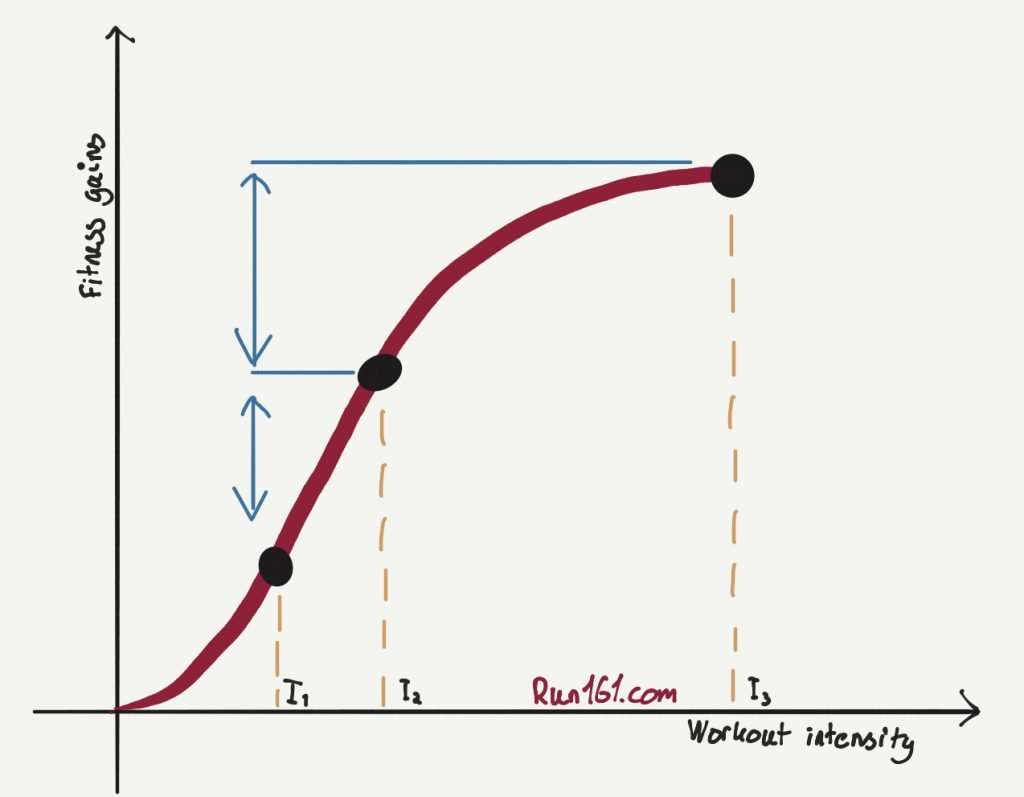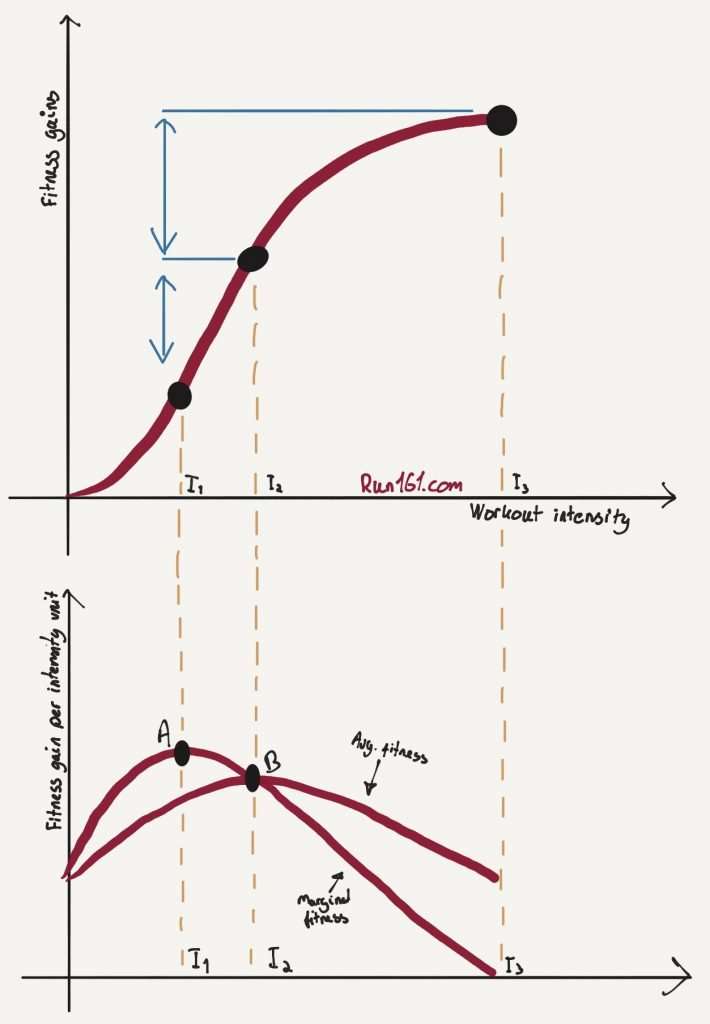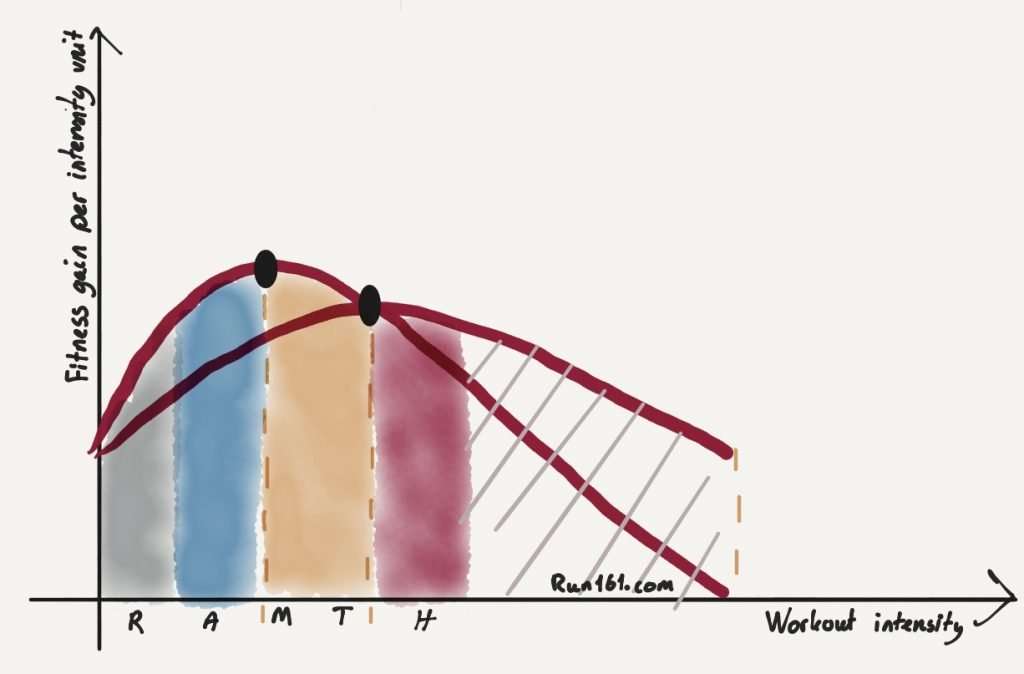In all walks of life, it is easy to falsely equivocate effort intensity with results. “Harder is better” is one of the most common myths in running — as I recently postulated on Twitter. The myth owes its resilience to the fact that runners are particularly prone to this misguided assumption.
The consequences tend to be dire. By going too hard, too often in training, we expose ourselves to injuries, burnout and even symptoms of overtraining such as prolonged fatigue and reduced performance.
At the root of this misconception, is impatience. Because of impatience, human intuition routinely over values intensive bursts and undervalues consistency. We naturally conclude that working harder must be better, because it will make us fitter, faster.
The media is exceptional at exploiting our desire for the quick fix. A ten year struggle becomes an overnight success. Sensational running performances are ascribed to a few weeks worth of workouts, rather than 15 years of consistent training.
A Framework for Identifying the Optimal Running Workout Intensity
By setting aside our impatience, we can focus on what matters. And that is, quite simply, getting the most bang for our buck. When it comes to running training, our goal should be to optimise the amount of fitness we get in return for each unit of effort we put in.
We can look to economics for a framework that helps us understand this relationship. The law of diminishing marginal returns teaches us that there is an optimal relationship between input and output. Beyond this point, adding an additional unit of input will result in a smaller increase in output.
Or, to translate into running terms: There is an optimal relationship between effort and fitness gains. Increasing effort once you pass this level, results in a proportionally lower gain in fitness.
Cumulative Fitness Gain As a Function of Workout Intensity

As the chart shows, your fitness gain increases with the intensity of your workout. However, beyond a certain intensity point, I1, the increased fitness gained from upping the intensity with a certain amount declines. The blue lines show that the increased fitness gains by increasing intensity from I1 to I2 is the same as increasing from I2 to I3. And that’s despite the latter being a far more drastic increase in intensity.
With consistency as our #1 goal, our objective is to optimise this relationship. By doing so, we benefit from significant fitness gains each workout, while at the same time reducing the risks of overload injuries.
While the chart above is useful as a framing tool, it doesn’t provide actionable advice. To get there, we can add more context by looking at the marginal relationship between fitness gain and workout intensity.
Average and Marginal Fitness Gain Per Intensity Unit

Here, we see two lines that show us the average fitness gain per “unit” of intensity for the entire workout, and the marginal fitness gain. The latter is the additional fitness gained from increasing the fitness one notch. Intensities I1 and I2 reveal two key points:
- Point A represents the intensity that corresponds to peak fitness increase per unit of intensity. The additional fitness gain diminishes beyond this point.
- Point B denotes the intensity where we maximise the fitness gain for every unit of intensity of the workout. Although we earn less fitness per intensity unit beyond point A, each increase up until point B still drags up the average fitness gain per unit of intensity.
By coupling this with what we know about running training intensity — through practice and research — we can illustrate the optimal workout intensity.
Running Intensity Zones and Fitness Gain

This chart illustrates what I believe is a key factor in maintaining consistency as a runner: The optimal relationship between workout intensity and fitness gain is in the intensity between high moderate and the upper bounds of threshold territory.
>> Background Information: An Introduction to Running Training Intensity
The number one reason for unplanned layoffs is going too hard in workouts, too often. Steer clear of this mistake to maximise your chances of stringing together months and years of uninterrupted training.
Recommended Workout Intensity
You should train across a variety of intensity to improve your fitness. However, I do believe one can eliminate most running above threshold intensity without sacrificing long term progress.
Yes, VO2max training has a role in race preparations and trying to optimise a single race performance— particularly at the highest level. However, when it comes to long term improvement, I believe that between moderate and lactate threshold is the optimal running workout intensity. Frequently, and with a decent volume per session.
Beyond regularly running strides, higher intensities are best used sparingly. And if you want to incorporate them into your regular training, I recommend doing so in the form of shorter hill repetitions, and overall quite low volume.
By doing so, you are optimising the relationship between intensity and fitness gain. And, even more important, you are prioritising the single most important factor for long term improvement: consistency.
Like this?
Let me know by sending me an email at lc@run161.com.
